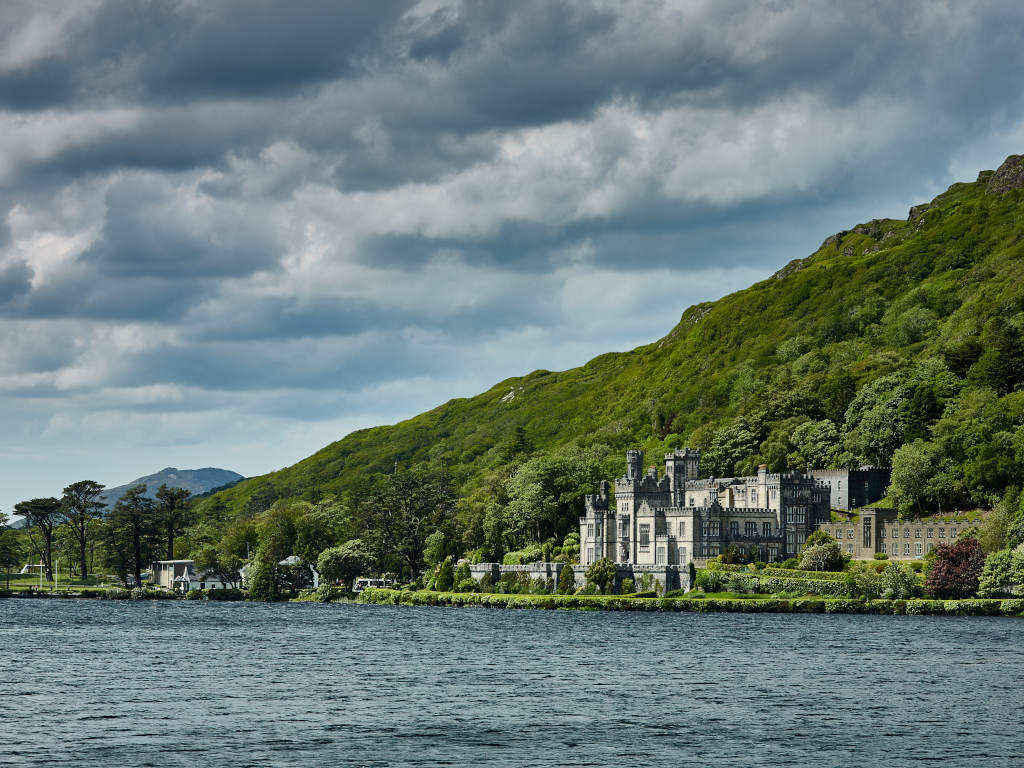County Louth Ireland | Things to See and Do

County Louth is a county in the Republic of Ireland. It is in the province of Leinster and is part of the Mid-East Region. It is named after the village of Louth. Louth County Council is the local authority for the county. According to the 2016 census, the population of the county was 128,884. Wikipedia
County Louth Ireland | Top Things to See and Do
- Carlingford Lough
- County Museum Dundalk
- Knockabbey Castle, County Louth
- St Peter’s Church, County Louth
- Beaulieu House and Gardens
- Monasterboice, County Louth
- Clochafarmore Standing Stone
- The Kildemock Jumping Church
- Proleek Dolmen, County Louth
- Stephenstown Pond Nature Park
- Old Mellifont Abbey
Carlingford Lough
Carlingford is a beautiful medieval coastal town situated between Dublin and Belfast, nestled between the stunning Mourne Mountains, Carlingford Lough and the Cooley Mountains.
Along the narrow medieval streets of Carlingford, you will find a wonderful array of cafes, restaurants, bars, shops, boutiques, craft workshops and antique dealers.
Steeped in history, Carlingford has many medieval ruins to visit such as: King John’s Castle, Taaffe’s Castle, The Mint, the Tholsel and the Dominican Priory.
The Proleek Portal Dolman is a megalithic tomb from around 3000BC and is located on a golf course in the grounds of the Ballymascanlon Hotel.
Carlingford has so much to offer people of all ages with its many outdoor activities such as hill walking, guided tours, mountain biking, horse riding, sailing, windsurfing, fishing, tennis and golfing.
County Museum Dundalk
A quick tour of the museum.
Knockabbey Castle, County Louth
St Peter’s Church, County Louth
Beaulieu House and Gardens
Monasterboice, County Louth
Monasterboice is an early Irish church dedicated to St Buithe who died around 520 and was closely associated with one of Ireland’s greatest saints, Colum Cille.
One story about Buithe recounts that he brought back to life a man who had been beheaded by the high king of Ireland. The fortunate man spent his remaining days tending to the monastic garden at Monasterboice.
Ironically, it was Buithe’s own head would be the monastery’s greatest relic, until it was stolen from the church in 1520, a thousand years after his death.
During the early medieval period Monasterboice was a centre of early Christian learning and literature, as reflected in the obituary of one of its clerics Flann Mainistreach who died in 1056. He was described in the annals as lector of Monasterboice and master of ‘wisdom, literature, history, poetry and science’.
Some years later, in 1097, the bell-tower of Monasterboice was burnt, resulting in the destruction of the monastery’s books and treasures. It is possible that this belfry was a wooden tower and that the stone tower that remains today was built soon after to replace it.
This six-storey round tower at stands 28.5m high and originally it must have been even taller as much of the top storey and the roof is missing.
Near the foot of the tower is one of two monumental stone crosses. Appropriately known as the Tall Cross, it stands 7m high and is the tallest cross in Ireland. It is constructed from four stones comprising the base, shaft, cross head and cap stone.
The east side of the cross features carvings depicting many scenes and figures from the Old Testament, while the west face is devoted to the events surrounding the crucifixion of Christ.
The second cross at Monasterboice stands some 5m tall, and though it may not be as big as the Tall Cross, it is arguably the finest example of a high cross in the country.
An inscription in Irish at the base of the shaft commemorates Muiredach, abbot of Monasterboice, who died in 924, and the cross is today known as Muiredach’s Cross.
The east face of the cross features several Biblical scenes, and on the cross head is a remarkable depiction of the Last Judgement complete with St Michael weighing the souls. To the left of Christ are the souls of the saved who deserve a place in heaven, while to his right a bearded devil holding a trident takes away the bad souls.
On the west face of the cross head is the crucifixion, while at the base of the shaft is the scene of Christ being mocked by Roman soldiers, though the sword carrying, moustachioed men were inspired by Irish or Viking warriors.
The sculptor who carved this cross had a sense of humour. At the base of the shaft on the north face are two long-haired men pulling each other’s beards, while on the west face are two cats – one licking its kitten, while the other is about to devour a bird.
The high crosses at Monasterboice are iconic of early Christianity in Ireland. In fact, they are part of a series of sculpted stone crosses across the country that stand out as some of the finest carvings anywhere in Europe during the 9th and 10th centuries.
Clochafarmore Standing Stone
Clochafarmore Standing Stone, in Knockbridge County Louth, is an impressive monument standing at over 3m high and 1.3m wide. This stone is traditionally associated with the greatest hero of Irish folklore, Cúchulainn.
Clochafarmore Standing Stone is an impressive monument standing at over 3m high and 1.3m wide. It is believed that standing stones may mark locations where great events took place and this stone is traditionally associated with the greatest hero of Irish folklore – Cúchulainn. It is located in Knockbridge County Louth,
Cúchulainn is the principal character of the epic Irish saga the Táin Bó Cuailgne (The Cattle Raid of Cooley). In this tale Cúchulainn defends Ulster from the forces of Queen Maeve of Connacht. According to legend Cúchulainn, who was fatally wounded, tied himself to this standing stone so that he could stay upright and face the opposing army. Even after his death, Cúchulainn’s enemies would not approach the stone for fear he was still alive. It was not until Morrigan (the Celtic goddess of War and Death) appeared in the form of a raven and landed on his shoulder that they were sure he was dead.
A bronze statue of this scene by Oliver Sheppard stands in the General Post Office on O’Connell Street, Dublin. This monument is Bronze Age and pre dates the Iron Age legend of Cúchulainn by many centuries and represents an attempt to interpret an existing, ancient landscape. The name Clochafarmore comes from the Irish Cloch an Fhir Mhóir meaning ‘Stone of the Big Man’. The field where it is located is locally called ‘The Field of Slaughter
The Kildemock Jumping Church
A (not so) quiet walk, I had the kids with me in this one. 4km south of Ardee, County Louth, the Kildemock ruin is a popular attraction and is more famously known as the ‘Jumping Church’.
Proleek Dolmen, County Louth
The magnificent Proleek Portal Tomb, is situated in the grounds of Ballymascanlon Hotel on the legendary Cooley Peninsula in County Louth. It is one of the finest examples of its kind in Ireland. Portal tombs have two tall stones at the front (portal stones) and a smaller stone at the back supporting a large capstone. A portal tomb resembles a giant’s table and is sometimes called a dolmen, which comes from the Breton word tolmen meaning stone table.
Proleek Portal Tomb is about 3m high and has a huge capstone weighing approximately 35 tons. Legend says that a wish will be granted to anyone who can throw a pebble on its capstone so that it stays there. The two front portal stones are 2m high. Known as the Giant’s Load, it is believed that it was carried to Ireland by a Scottish giant named Parrah Boug McShagean (who is said to be buried nearby). There is also a Bronze Age wedge tomb nearby.
The gallery of the tomb is almost 20 feet in length and almost five feet wide at the west end, narrowing at the east end that is covered by two remaining roof stones. At the west end is a large stone slab closing the gallery. There is a single roof lintel in place near the east end.
Stephenstown Pond Nature Park
Beautiful walk around the pond.
Old Mellifont Abbey
Only ruins remain of what was once an important Irish abbey. It is located in pleasant countryside about 10 miles from Drogheda.m
Help your kids learn about the Counties of Ireland – Download the FREE Worksheet below





